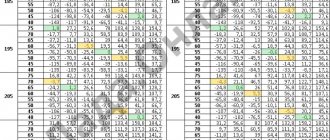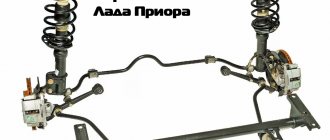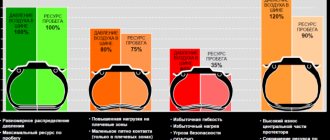Hello, friends! Many potential buyers of the domestic flagship car are interested in the trunk of a Vesta station wagon, sedan, Vesta Cross, etc.
The machine is available in several modifications. It is too early to talk about generational change.
But there are several interesting versions. It is worth noting that the trunk volume of the Vesta SV is not the same as that of a classic three-volume. That is, in a sedan body.
We propose to separately consider all available versions and understand how much cargo fits in the luggage compartment of this or that Vesta.
Sedan
For starters, a pioneer. Vesta was first presented in a sedan body. Happened in August 2014. Full-scale production began in September 2015. And 2 months later the sedan went on sale.
The three-volume model is offered with a trunk capacity of 480 liters. The backrest can be lowered, allowing you to transport long loads.
This is, of course, not the compartment in the Skoda Octavia. But still not bad. Let's be frank.
Station wagon (SW)
Now about the trunk of the Lada Vesta station wagon.
Interestingly, we had to wait almost 2 years for the premiere of this body type. We presented a new product and also launched production in the summer of 2017.
In the normal position of the rear sofa up to the shelf there is a capacity of 480 liters. But if you load it under the ceiling, the volume will be 2 times larger.
Another 95 liters are available under the flooring in a special first niche. The second niche is used for a full-size spare wheel.
The rear seat lowers. As a result, the total trunk volume of the Lada Vesta station wagon is 825 liters. The only drawback is that a flat platform is not formed.
But still, the trunk dimensions of the Vesta SV are quite good. But the luggage compartment of the Lada Largus Vesta SW is far away.
What is the volume and dimensions of the trunk of the Lada Vesta SW (station wagon)
AvtoVAZ chief designer Steve Mattin said in an interview that when designing the Lada Vesta SW station wagon, the Life Style option with a tilted rear window and a sloping roof was chosen.
The result is an emotional car with a sporty look but a smaller trunk. But still, what is the volume and size of the luggage compartment? Luggage compartment volume:
- with raised floor to curtain - 385 l;
- without raised floor to curtain - 480 l;
- with the rear seat backs folded down - 825 liters.
- width - 1000 mm;
- height - 860 mm.
Main trunk dimensions:
- minimum width (between arches) - 980 mm;
- maximum width (including two niches) - 1340 mm;
- minimum length (to the back of the rear seat) - 930 mm;
- maximum length (to the back of the front seat, moved as far forward as possible) - 1820 mm;
- minimum height (above the top of the folded rear seatback) - 660 mm;
- maximum height (above the top of the folded rear seatback, without cushion) - 830 mm.
- threshold height - 110 mm.
Trunk false floor dimensions:
- width - 900 mm;
- length - 940 mm;
- height (without cover) - 110 mm;
- height (with lid) - 80 mm.
The remaining dimensions of the trunk are shown in the photo:
The dimensions of the trunk of the Lada Vesta SW were taken specifically for the Lada.online website:
With the front seat folded:
- The distance from the trunk lid to the bottom of the trunk (curved down) is 3120 mm, and diagonally 3200 mm.
- The distance from the trunk lid to the trunk in a straight line is 2700 mm.
- The distance from the trunk lid to the windshield is 3000 mm.
See photo of the Lada Vesta SW trunk here.
It turns out that the trunk of the Lada Vesta station wagon is wider and longer than that of the Lada Kalina station wagon (see trunk dimensions) and Priora (see trunk dimensions). He loses only in height.
Off-road station wagon (SW Cross)
The Vesta SW Cross version was first shown in the summer of 2015. But then it was a conceptual version.
The full premiere took place in June 2021. Moreover, it cannot be said that the production version was very different from the concept.
This is an all-terrain station wagon. It’s difficult to call this Vesta a crossover.
And now about the trunk volume of the Vesta SV Cross.
Alas, there have been no changes here compared to the regular station wagon.
Therefore, this is a standard 480 liters up to the shelf level. It's nice that the top niche remains. There is enough space for another 95 liters of luggage.
The rear seat folds down, of course. And in proportions 60:40. Like a station wagon, there will not be a perfectly level platform. But at once the capacity increases to 825 liters.
Frankly not bad. Going on a family trip in such a car is not a problem. And the increased ground clearance only helps to better overcome obstacles created by Russian roads.
Dimensions of the luggage compartment of Lada Vesta SV/SV Cross
Thanks to the thoughtful design of the internal parts of the interior panels, engineers were able to fit an impressive trunk into a medium-sized frame. All useful capacity guarantees easy transportation of small furniture or a comfortable trip to the sea or on a camping trip with the whole family. At the same time, there is no shortage of free space.
The standard compartment dimensions are as follows:
- standard volume – 480 l;
- without raised floor – 575 l;
- with seat backs folded - 875 liters.
Clear compartment opening:
- between arched posts – 980 mm;
- maximum width – 1340 mm;
- from the lid to the seat backs – 930 mm;
- maximum length to seat backs – 1820 mm;
- minimum vertical clearance – 660 mm;
- maximum vertical clearance – 830 mm;
- threshold height from the ground – 110 mm;
- raised floor width – 900 mm;
- raised floor length – 940 mm;
- height of additional compartment – 110 mm/with lid – 80 mm;
- capacity of additional niches – 30 l.
Bottom line
The Lada Vesta SV/SV Cross crossover is a high-quality domestically produced car that competes with the offers of European and American concerns. Optimal pricing policy, thoughtful ergonomics, stylish design – these are the main advantages of the updated development.
All-terrain sedan (Cross)
See also
Expedition Trailers: official website, products, owner reviews
If in regular versions a sedan appeared first, and then a station wagon, then everything is different here. The world was the first to see the cross-version of the station wagon. Only then was the cross-version of the sedan presented.
The concept of this car was first shown at the end of summer 2021. But we had to wait almost 2 more years before the presentation of the production version. Namely, until April 2021. It was a special event organized in Moscow.
I was pleasantly pleased that visually the production version was no different from the concept. The appearance turned out to be interesting and modern.
But what about the trunk volume of the Vesta Cross? Alas, no way. Or rather, exactly the same as its three-volume counterpart.
In the case of the Lada Vesta Cross, the trunk volume is 480 liters. The backrest can be lowered. This will allow you to load some lengthy items.
Many or few? For comparison, the same Nissan X-Trail compartment has a capacity of 479 liters.
But one could hardly expect an increase in the size of the cargo compartment, since the trolley for the Vesta Cross was not structurally changed.
What's the result?
So, no miracle happened. However, putting together all the measurements, impressions and features of the four bodies, it is worth saying that there are many interesting nuances that are ready to refute traditional ideas about practicality.
Hatchback. Despite the predictable last place, this body type is in vain called purely urban, as the Kia Rio X-Line proved. Formally, the “Korean” would have surpassed even the Lada Vesta station wagon in terms of capacity, if the latter had not had a double bottom. In addition, a hatchback is definitely more convenient than a sedan when loading, in particular, large items, and if the car were made plumper, it would also score a point higher in terms of convenience in the rear seats. The Rio's trunk is also let down by its functionality, which comes down to a minimum set of benefits.
Sedan. The most spacious, but also the most inconvenient trunk. “Three-volume” easily proves that all this pursuit of individual buyers for station wagons in many cases is self-indulgence. All other things being equal, the sedan's volume is completely comparable to the working area of the trunk of almost any station wagon, not to mention hatchbacks. And skillful car enthusiasts actively use the folding rear row and the space on the sofa for transporting large luggage.
One thing: all this requires extra body movements. Diving into the “dungeon”, “playing Tetris”, fiddling with oversized items or the inability to transport them at all are the main disadvantages of a sedan, no matter what size it is.
Station wagon. Nominally the most spacious, practical and convenient body in terms of storing luggage. However, everything depends on the specific car, as the Lada Vesta SW Cross proved. The obvious emphasis on external data at the expense of practicality relegated capacity to the background, which is why the station wagon ended up in penultimate place in this parameter and second in convenience. All other things being equal, the car won a silver medal solely due to its well-thought-out functionality - look for spaciousness in the Largus.
But generally speaking, a station wagon is only relevant for those who constantly load their car under the roof or transport oversized items with enviable regularity. In fact, he is engaged in commercial delivery. In all other cases, the driver will carry air with him most of the time.
Liftback. Despite the fact that it shared the number of points with the domestic station wagon, it absolutely deservedly takes first place. Firstly, because it offers the largest trunk in the class, and competes on equal terms with representatives of the older “C” segment. Secondly, it provides the best access to it thanks to the huge opening, and thirdly, it is inferior in functionality only due to the lack of a “Ladova” organizer with a double bottom. And the only nuance in the form of a bevel of the rear window is compensated by the better depth of not only the trunk, but also the interior when folding out the sofa.
Well, if we compare cars as a whole, including all driving characteristics, then by the sum of the parameters... But what happened by the sum of the parameters, read HERE.
The editors of the “Engine” magazine express gratitude to , the official dealer of Skoda in St. Petersburg, and “Autocenter PLT”, the official dealers of Lada and Kia in St. Petersburg, as well as the Russian representative office of PSA Peugeot Citroen for the cars provided.
Sports sedan (Sport) and exclusive version
See also:
How to drain water from the washer reservoir if it is not possible to remove it
There was also a sports modification called Vesta Sport.
All emphasis was placed on technical characteristics. There is a 1.8 liter engine and 145 horsepower.
In terms of cargo capabilities, nothing has changed. It’s good that they didn’t make the compartment smaller. As a result, 480 liters.
An exclusive modification is called Exclusive. All the salt in the improved design and modified interior. Everything became richer and more prestigious. But even here the volume of the luggage compartment has not changed. Standard for a sedan is 480 liters.
Dual fuel sedan (CNG)
This is a special version of Vesta that runs on 2 types of fuel. These are gasoline and compressed natural gas.
The version was first shown in the fall of 2015. But it took another 2 years to carry out all the tests, as well as tests. Production started in the summer of 2021.
Since this is a sedan, many expected to see the same 480 liters.
But no. The compartment size has become smaller. And all due to the installation of a 90 liter gas cylinder. As a result, it turned out that there were 250 liters of free space left, and they also made it impossible to lower the rear sofa.
Long sedan (Signature)
In August 2021, at the Moscow Motor Show, a VIP version of the Lada Vesta sedan was shown. The modification is called Signature.
It was seen online back in the fall of 2015. Since May 2021, the government of the Samara region has tested the car.
The peculiarity of the version is that the body has been lengthened by 250 mm, and the quality of equipment has also been improved. In general, the model is assembled according to individual orders. Therefore, it can rightly be considered an exclusive car.
But what about the trunk? It should also increase.
No. Apparently, all 250 mm was spent on increasing legroom for officials and VIP clients. Therefore, they left the standard 480 liters for a sedan.
But there is another problem. The back of the rear sofa was deprived of the ability to fold. It is not possible to transport any long items.
On the other hand, why do officials need this?! Everything is logical.
Available useful options for the new body
Despite the rather compact dimensions of the trunk, a domestically produced car will be able to surprise owners with a large range of useful options.
Initially, the model was developed for family people who have basic requirements for comfort and practicality of operation.
However, later the experts diluted the intended purpose of the car and added many stylish details. There are several main options in the new body that will help improve the daily use of the car:
- Folding rear seats. In order to recline the back row, just press a special button. In this case, the folded seats form an almost horizontal, flat plane of the luggage compartment.
- High quality lighting. LADA Vesta SW uses new-style trunk lights that have a directional glow, which has a positive effect on the convenience of unloading or loading the car in the evening.
- Nets for securing cargo. In the luggage compartment of the SV version there are special mesh fasteners. The side panels and rear seat wall have appropriate mounting hardware for installation.
- Spacious underground niches. The luggage compartment design has lower niches with partitions that are hidden behind decorative floor panels. Each compartment is able to accommodate any flat loads in the form of tools or travel accessories.
- Side pockets and niches. Thanks to the presence of additional compartments and closed niches on the side, car enthusiasts can conveniently store cans, jacks and other automotive tools that take up useful space in an ordinary trunk.
The lower half of the trunk space is covered with a special horizontal curtain that stretches its entire length. To increase practicality of operation, the doorway has a plastic finish. The covers protect the bumper seal and paint from mechanical damage during loading.











